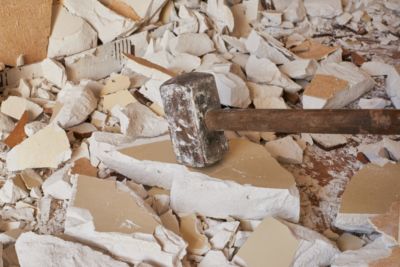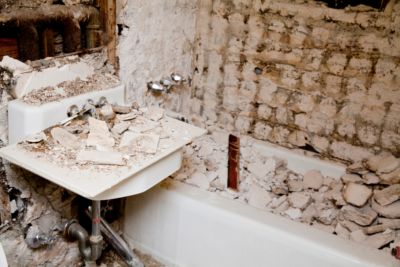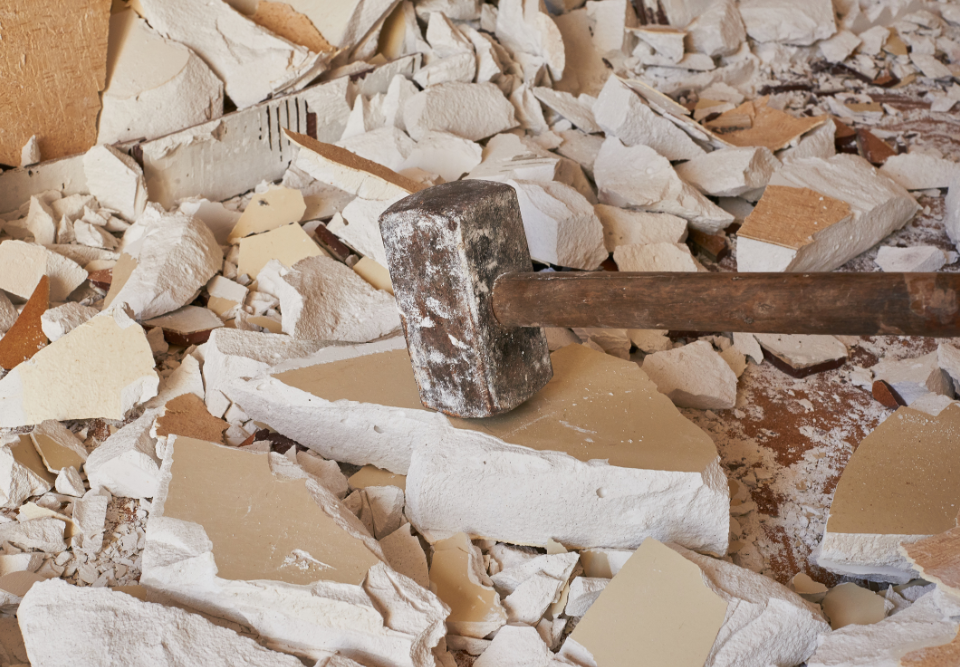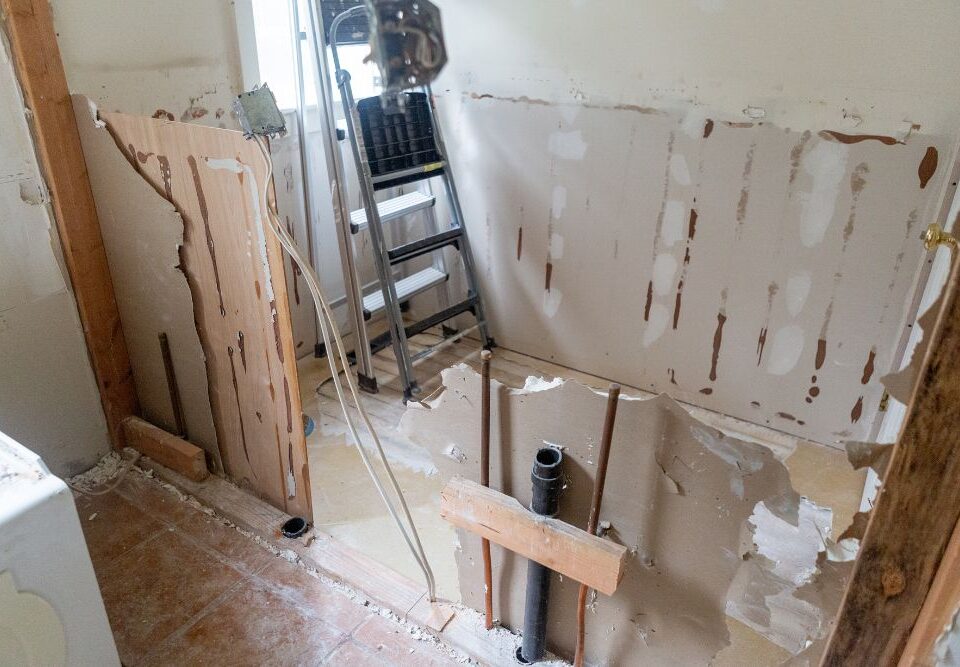
Drywall Removal How It Fits Into Your Home Renovation Plan
September 8, 2025
Deck Removal An Easy Guide for Homeowners
September 8, 2025What You Need to Know Before Starting Bathroom Demolition
Bathroom demolition may look like a simple task, but it often unfolds with surprises hidden behind walls and beneath floors. What seems like just tearing out fixtures can expose plumbing, wiring, or structural supports that require careful handling. Rushing into demolition without preparation often results in unnecessary expenses, delays, or even damage to essential systems. A thoughtful approach helps prevent headaches before they begin.
When a homeowner takes time to plan, demolition becomes a smoother and more efficient process. It clears the way for a remodel without leaving costly mistakes in its wake. The first phase of any successful bathroom renovation is not simply destruction—it’s controlled preparation. By understanding what to expect and how to protect yourself during the process, you create the foundation for a beautiful transformation. Demolition is less about tearing down and more about setting the stage for what comes next.
Evaluating the current bathroom layout
Every successful bathroom demolition starts with observation. Before removing a single tile, take time to study how your bathroom is arranged. Note where each fixture sits, such as sinks, tubs, and toilets, and recognize the systems that support them. Behind the surfaces you see lies a network of pipes, vents, and wiring that keeps everything functioning. By mapping out this existing layout, you can better anticipate which areas will be straightforward and which will require extra care and attention.
This evaluation also helps you see how demolition fits into your renovation goals. If the remodel involves moving fixtures or rearranging the space, knowing what lies within the walls and beneath the floors is invaluable. A clear understanding prevents damaging hidden systems and keeps costs down. Evaluating the layout isn’t just a precaution; it’s a way to visualize the future space while ensuring the work ahead remains smooth and efficient.

Shutting off water and electricity
Bathrooms combine water and power in one small space, which makes safety the top priority before demolition begins. Start by turning off the main water supply to the bathroom and draining any remaining water from pipes and fixtures. This simple action can prevent flooding and keep the worksite dry. Equally important is switching off the electrical circuits connected to the room. Outlets, lights, and fans all carry risks if power is still flowing when demolition tools come into play.
Once utilities are off, double-check by testing outlets and running taps. Confirming that water and power are disconnected ensures a safe environment for working. It might feel like an extra step, but skipping it can lead to dangerous accidents or expensive property damage. Taking these precautions transforms a risky task into a controlled process. By securing the environment first, you give yourself confidence to continue demolition without worrying about hidden dangers.
Gathering tools and protective equipment
The right tools make demolition faster, but protective equipment makes it safer. A basic toolkit includes hammers, crowbars, drills, utility knives, and a reciprocating saw for stubborn materials. Buckets, wheelbarrows, and heavy-duty trash bags are also essential for collecting debris and keeping the workspace organized. Having these items nearby prevents wasted time and helps you work methodically.
Just as important as tools are the protective measures you take for yourself. Gloves protect against sharp edges, goggles keep dust and shards away from your eyes, and sturdy boots reduce the chance of slipping on uneven floors. A dust mask ensures you breathe safely while cutting through drywall or tile. These items might seem secondary, but they shield you from hazards that can quickly derail a project. With tools ready and safety gear in place, the demolition becomes more efficient and far less stressful.
Removing fixtures in the right order
Fixtures may appear independent, but removing them in sequence saves time and effort. Start small by clearing mirrors, cabinets, towel racks, and other lightweight pieces. With these out of the way, you create open space for handling larger, heavier fixtures without obstacles in the way. This methodical approach avoids damage to remaining structures and keeps the workspace organized.
Once smaller items are gone, you can focus on plumbing-heavy fixtures like sinks, toilets, and tubs. Toilets should be emptied and disconnected carefully to avoid spills, while tubs may need caulking cut away before removal. Tackling these larger elements in an orderly fashion makes the entire demolition manageable. By following a logical sequence, you reduce frustration and limit mistakes, giving yourself a clearer, safer environment to complete the job. Structure and planning make demolition more predictable and less overwhelming.
Handling tile removal effectively
Tile removal often becomes one of the longest and most frustrating parts of bathroom demolition. Tiles are held in place with strong adhesives that resist quick removal. Begin by loosening grout with a saw or knife, then pry tiles gently with a hammer and chisel. Working slowly prevents unnecessary damage to the underlying wall or subfloor. Although tedious, patience ensures surfaces remain intact for the renovation that follows.
Debris from tile removal builds up quickly. Keep buckets or sturdy bags nearby to collect shards and minimize tripping hazards. Always wear gloves and goggles since tiles can shatter without warning. Clearing as you go not only makes the process more manageable but also prevents sharp fragments from spreading through the work area. By approaching tile removal steadily and with the right precautions, you’ll transform a messy task into a manageable step toward a blank, ready-to-design surface.
Addressing drywall and insulation
Behind every bathroom wall lies more than drywall. Once panels are cut away, you may encounter insulation, wiring, or even hidden plumbing. Using a stud finder before cutting helps you avoid damaging these systems. Removing drywall in smaller sections makes the work easier and reduces debris size, keeping cleanup under control. Slow, deliberate work is the key to avoiding mistakes that might complicate the renovation.
When insulation is exposed, handle it with care. Fiberglass can irritate skin and lungs, so always wear gloves and a mask. Place removed insulation into sealed bags to limit dust and fibers spreading through your home. This step not only opens the space for inspection and repairs but also gives you the opportunity to upgrade materials. Removing drywall and insulation is about more than demolition—it’s a necessary step in improving your home’s structure, comfort, and energy efficiency.
Dealing with plumbing lines
Plumbing is one of the most sensitive parts of bathroom demolition. Even after the water supply is turned off, pipes can still contain residual water that spills when fixtures are disconnected. Always keep towels and buckets close by to catch drips during the process. Work carefully when detaching sinks, toilets, or tubs, and cap pipes to prevent debris from entering the system. This simple precaution keeps plumbing ready for the next installation.
Demolition also offers the chance to examine your plumbing’s condition. If pipes are outdated or showing signs of wear, this is the perfect time to plan for replacements. Updating plumbing during a remodel is far easier when the walls and floors are already open.
Disposing of debris responsibly
Demolition creates a surprising volume of waste. Broken tiles, drywall pieces, insulation, and old fixtures can overwhelm a space quickly if not managed. Sorting materials into piles such as metal, wood, ceramic, and general waste makes disposal simpler and often allows for recycling. Planning for how to move debris out of your home is just as important as the demolition itself.
Responsible disposal benefits both your home and the environment. Leaving piles of debris unattended creates hazards and delays renovation. Many homeowners find junk removal services helpful for hauling heavy or hazardous materials. By arranging proper disposal early, you avoid the stress of clutter and maintain a safe, workable environment.
Maintaining safety throughout the project
Demolition work comes with risks, from sharp edges to heavy lifting and dust-filled air. Keeping safety at the forefront of the project reduces the chance of accidents. Move slowly, plan each step, and keep tools and debris organized. Clearing pathways and removing tripping hazards makes transporting materials outside much easier and safer.
Safety also means knowing your limits. Take breaks when needed, stay hydrated, and don’t hesitate to ask for help when handling large or awkward items. Protecting yourself during demolition prevents small mistakes from turning into major setbacks. By prioritizing safety at every stage, you not only protect your health but also ensure steady progress toward your renovation goals.
Knowing when to hire professionals
While DIY demolition can be rewarding, there are times when professional help is the smarter option. Large tubs, stubborn tile flooring, or walls filled with plumbing and wiring may be too complex to handle without specialized knowledge. Calling in experts ensures these challenges are managed safely and efficiently, preventing costly mistakes.
Professionals also streamline the cleanup process. They have the equipment to remove heavy debris and dispose of it properly, sparing homeowners multiple trips to disposal sites. Choosing to hire experts when necessary doesn’t diminish your role in the renovation—it enhances it by keeping the project on track.
Conclusion
Bathroom demolition is more than just tearing down walls—it’s the groundwork for transformation. From studying the layout and shutting off utilities to handling drywall, tile, and plumbing, each step shapes the success of your renovation. Preparation, safety, and disposal planning create order in what could otherwise be chaos. A carefully executed demolition ensures fewer surprises and provides a clean slate for the improvements ahead.
For efficient cleanup, North Bay Junk Removal offers trusted support. Located in Santa Rosa, CA, their team specializes in handling demolition debris quickly and responsibly. With experience in managing construction waste, they simplify projects by leaving spaces clean and ready for renovation. Whether dealing with heavy tile, broken drywall, or outdated fixtures, their junk removal services provide peace of mind. Call North Bay Junk Removal at 707-478-6817 to make bathroom demolition less stressful and prepare your home for its fresh new look.



